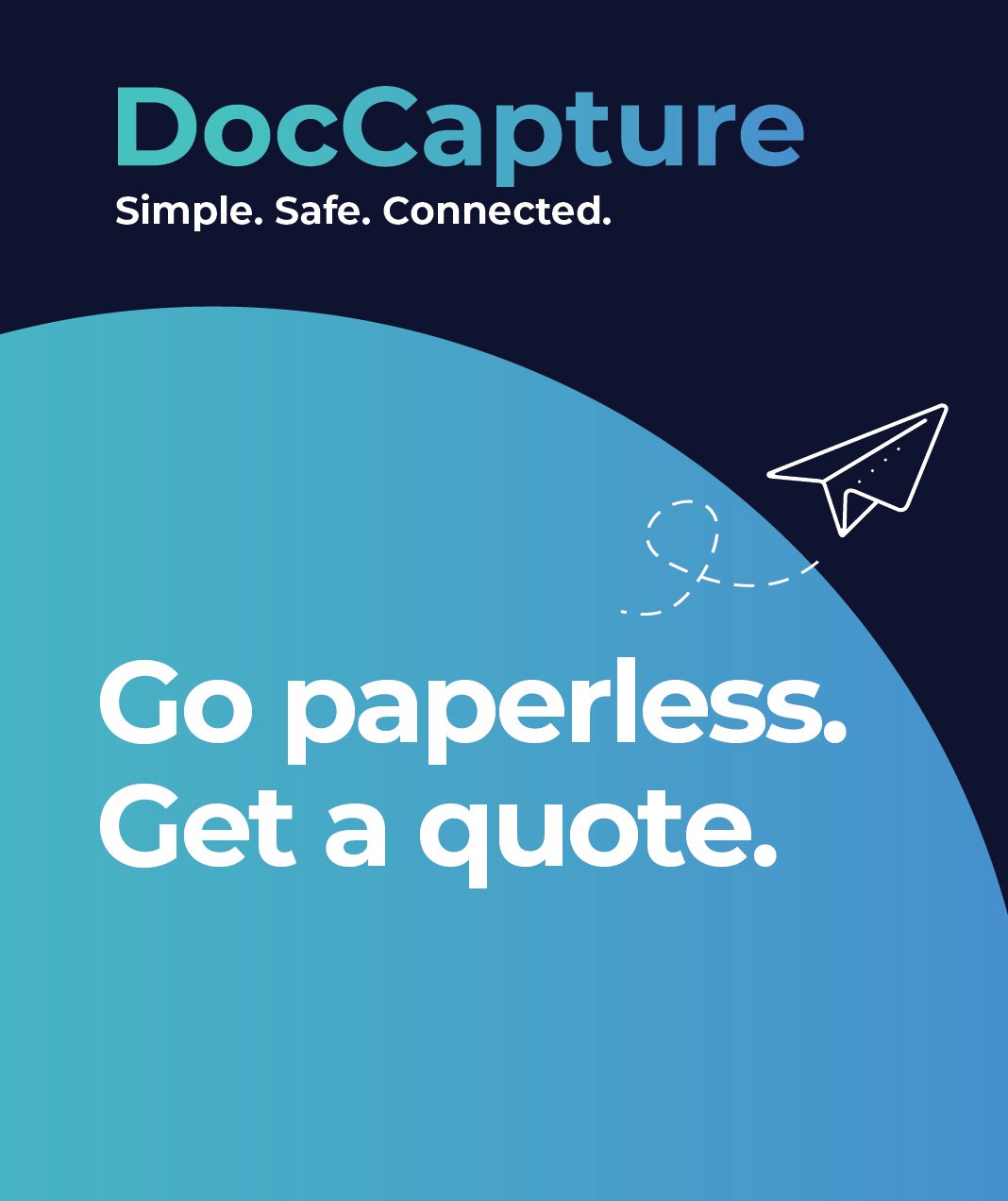Aligning HR Strategy with Digital Transformation Goals
Table of contents
In today’s fast-paced, technology-driven world, strategic HR digital transformation is no longer optional—it’s essential. This transformation refers to the deliberate integration of digital technologies into every facet of Human Resources (HR) operations to align HR with broader business goals. For HR leaders, including CHROs, HR Managers, and Compliance Officers, digital transformation isn’t just about adopting the latest tools—it’s about creating an HR function that is efficient, compliant, secure, and aligned with the organization's strategic vision.
A critical element of this transformation is the digitization of HR records through document scanning. As HR departments manage vast amounts of sensitive information—from employee files and contracts to compliance documentation—traditional paper-based systems pose significant challenges. These include inefficiencies, data silos, compliance risks, and limited accessibility. By digitizing records, HR teams can not only streamline workflows but also contribute to broader organizational goals like cost reduction, regulatory compliance, data security, and operational agility.
This blog explores how strategic HR digital transformation, powered by document scanning, helps HR professionals align their operations with overall business strategies, with a particular focus on sectors like education and large enterprises.
The Role of HR in Digital Transformation: How HR’s Goals Align with Overall Business Objectives
HR is no longer seen as just an administrative function; it’s a strategic partner in achieving business goals. A strategic HR digital transformation aligns HR’s objectives—such as talent management, compliance, and operational efficiency—with the broader organizational mission. This alignment is particularly important for organizations facing increasing regulatory requirements, data security challenges, and talent competition.
One way HR leaders can drive this transformation is by focusing on data management and compliance. Digital records allow for better data governance, improved security protocols, and more seamless compliance with evolving legal and regulatory frameworks. For instance, automating HR workflows and digitizing employee records make it easier to enforce document retention policies, adhere to privacy regulations, and respond to audits efficiently. This proactive approach not only reduces risks but also frees HR teams to focus on strategic initiatives such as talent development and workforce planning.
Digital transformation also supports HR’s contribution to cost savings and operational agility. Paper-based systems are resource-intensive, prone to errors, and difficult to scale. By adopting document scanning and digital records management solutions, HR can streamline processes, reduce physical storage needs, and minimize manual errors. These improvements enable HR to become a driver of efficiency across the organization.
For deeper insights into HR’s evolving role in digital transformation, check out:
The Document Scanning Advantage: Benefits of Digitizing HR Records
At the heart of strategic HR digital transformation is the shift from paper-based to digital records through document scanning. For HR leaders, this transformation isn’t just about convenience; it’s about unlocking operational efficiencies, improving compliance, and enhancing data security.
Here’s a breakdown of the key benefits:
Enhanced Efficiency
Digitizing HR records streamlines everyday tasks such as onboarding, benefits administration, and records retrieval. Instead of sifting through filing cabinets, HR professionals can access digital documents instantly, saving valuable time. Digital workflows also reduce redundancies and manual errors, improving overall process efficiency.
Improved Compliance
With ever-evolving data protection laws like GDPR and HIPAA, maintaining compliance is critical. Digital document management systems make it easier to implement and enforce document retention policies, control access permissions, and generate audit trails. For more insights, see the 2023 Guide to HR Document Retention Requirements.
Strengthened Data Security
Physical HR records are vulnerable to theft, loss, and damage. Document scanning enhances data security by enabling encrypted storage, access control, and secure backups. This not only protects sensitive employee information but also minimizes risks of breaches and non-compliance.
Cost Savings
Switching to digital records reduces costs associated with paper storage, printing, and document retrieval. Additionally, digital systems require less physical space, freeing up valuable real estate within the organization.
For a deeper dive into document scanning’s role in HR, explore:
Challenges and Solutions: Overcoming System Integration, Change Management, and Security Risks
While the advantages of strategic HR digital transformation are clear, the journey isn’t without challenges. HR leaders must anticipate and proactively address common obstacles such as system integration, change management, and security concerns. Here’s how:
System Integration
Integrating digital document management with existing HR software (e.g., HRIS, payroll systems) can seem daunting. However, choosing a solution with robust APIs and compatibility with widely used platforms simplifies integration. Collaboration with IT departments and solution providers is crucial to ensuring seamless data flow and avoiding data silos.
Change Management
Transitioning to digital systems requires more than just technology; it demands a cultural shift. HR teams accustomed to paper-based processes may resist change. To address this, HR leaders should:
-
Provide comprehensive training on digital tools.
-
Communicate the benefits of digital transformation clearly.
-
Involve stakeholders early to gain buy-in.
Highlighting success stories, such as HR departments that streamlined operations and boosted compliance through digitization, can also motivate teams to embrace the change. For inspiration, see:
Security Risks
Digitizing HR records necessitates stringent data protection measures. Cloud-based systems must adhere to the highest security standards, including encryption, access controls, and regular security audits. Partnering with trusted providers that prioritize data protection helps mitigate risks.
For HR departments, the key is to adopt a phased approach: start with a pilot program, gather feedback, and refine processes before full-scale rollout.
Case for School Boards: Addressing Unique Challenges in Educational Institutions
School boards and educational institutions face unique challenges in managing HR records. From teacher certifications and background checks to compliance with FERPA and local education policies, these organizations handle vast amounts of sensitive data. Traditional paper-based systems make it difficult to manage records securely and efficiently, increasing the risk of non-compliance and data breaches.
Strategic HR digital transformation through document scanning offers a tailored solution for educational HR departments. By digitizing employee records and integrating digital workflows, school boards can:
-
Enhance Compliance: Automated document retention and access controls help ensure adherence to education regulations and protect student and staff privacy.
-
Streamline Processes: Digitized records enable quicker onboarding, benefits administration, and reporting, freeing HR teams to focus on talent development and student outcomes.
-
Improve Security: Digital systems with encryption and role-based access reduce the risk of unauthorized access to sensitive HR data.
For more information on how HR digital transformation benefits educational institutions, explore:
Action Steps: Practical Tips for HR Leaders to Initiate or Enhance Digital Transformation
For HR professionals ready to embrace strategic HR digital transformation, here are practical steps to get started or enhance ongoing efforts:
Conduct a Needs Assessment
Evaluate current HR processes to identify bottlenecks, compliance risks, and inefficiencies. Determine which areas would benefit most from digitization, such as employee records management, onboarding, or benefits administration.
Select the Right Document Scanning Partner
Choose a document scanning provider that offers secure, scalable solutions tailored for HR. Look for partners with expertise in compliance, data security, and seamless system integration. A strong partner can guide you through planning, implementation, and ongoing support. For HR scanning services, visit HR Document Scanning.
Develop a Phased Implementation Plan
Avoid overwhelming your team by breaking down the transformation into manageable phases. Start with high-impact areas (like personnel files) before expanding to other functions. Pilot programs can help test systems and processes.
Invest in Training and Change Management
Prepare your HR team for new digital workflows by offering comprehensive training and clear communication. Emphasize the benefits, provide hands-on demonstrations, and recognize early adopters.
Monitor, Refine, and Scale
Once digital systems are in place, continuously monitor performance and gather user feedback. Use insights to optimize processes and expand the digital transformation to additional HR functions.
For further inspiration on transforming HR processes, check out:
Conclusion
As businesses and educational institutions navigate an increasingly digital landscape, aligning HR strategies with broader organizational goals is more important than ever. Strategic HR digital transformation, powered by document scanning and digital records management, empowers HR departments to enhance efficiency, improve compliance, strengthen data security, and reduce operational costs.
By taking proactive steps—conducting needs assessments, selecting the right partners, implementing phased rollouts, and investing in change management—HR leaders can position their organizations for long-term success. Now is the time to reimagine HR as a strategic driver of business value.
Ready to take the next step? Fill out our "get a quote" form today to learn how DocCapture’s document scanning solutions can help your HR team embrace digital transformation and achieve your strategic goals.
Share this
You May Also Like
These Related Stories

The Future of HR: Adopting Digital Solutions for Compliance and Security

Enhancing HR Efficiency: How Document Scanning Streamlines

